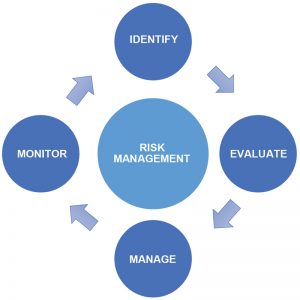Risk is an inevitable part of doing business. Active management of the risk is what creates consistently successful organizations. Risk management is defined as forecasting and evaluating financial risks and identifying procedures to avoid or minimize their impact. As structural engineers, we have a specific set of risks in doing business. We need to 1) identify the risks, 2) evaluate their relative significance, 3) develop procedures to minimize those risks, and 4) monitor the results. I like to view our risk exposure through the project life cycle lens.
Client and Project Selection
The most important facet of risk management is client and project selection. We all have our favorite clients, many of whom are demanding but fair and reasonable. Unfortunately, some clients also present problem after problem on their projects. We need to be willing to walk away from consistently problematic clients which present a disproportionate amount of risk compared to potential profitability. As a result, you reduce your exposure and improve the mental health of you and your employees involved in those projects. It would be best if you consistently evaluated your clients at the end of each project.
New projects present new challenges and taking them on can be exciting. However, taking on projects outside your area of expertise significantly increases your risk. Therefore, be selective about the projects you are willing to take on. Be strategic if you accept projects outside your wheelhouse and implement measures to mitigate the risk.
Scope, Fee, Contract, and Negotiations
Clearly define what you will be doing on the project and what you will not do. Develop a detailed scope of work for all your projects. By doing so, you clearly delineate additional services, and the scope functions as a guide for staff on the project. When developing fees, consider the level of effort and the value of your services. Do not negotiate yourself down on fee. Arrive at your fees using multiple methodologies. Develop a systematic way to gather historical project fee data to use as one metric in developing your fee. Finally, create consistent fee and scope development standards throughout your organization.
Sign fair contracts that proportionally assign the project risks. Contracts can be confusing and complicated. Start by using contracts developed by American Institute of Architects (AIA) or Coalition of American Structural Engineers (CASE). Do not sign contracts you do not understand.
When negotiating contracts, always be willing to walk away from the project. Without this, you do not give yourself room for negotiation. Before you begin negotiations, you should have 1) terms you are willing to live with and accept as a show of good faith, 2) terms that you are okay with provided some change to the language is made, and 3) the terms that are deal-breakers and will cause you to walk away.
When negotiating project fees, a reduction in fees should be accompanied by a proportionate reduction in project scope.
Design Documents and Construction
Producing quality design documents inevitably reduces the potential for problems on a project. You must have a reasonable schedule and appropriate fees for producing quality documents. Put the right people with the proper tools on the project. Build on your past quality design documents and look for ways to improve your details and designs based on lessons learned. Implement a quality assurance/quality management program you follow, one that does not just sit on a shelf/server.
The construction phase is where the rubber meets the road and, often, if we have problems with a project, they happen at this stage. If you selected the right client, project type, have adequate fees, good contract terms, and quality documents, you are in good shape but still need to manage your risk during construction. Take a proactive team-first approach to solving problems that are part of your scope. However, do not look to solve problems outside your scope or expertise. Provide a timely review of submittals and responses to RFIs as construction delay claims are almost always a portion of the dispute. If you have been involved in a claim, you know documentation is a critical aspect of the process and many hours can be spent retracing the issues under dispute. With text messages, instant messaging, emails, and various construction management software, there are many ways we communicate with the team during construction. Implement a detailed, repeatable procedure for documenting decisions and communications.
Culture of Risk Management
There are many landmines to avoid at every stage of a project. Creating a culture of risk management in your organization increases your profitability and quality and thus reduces your claims. Culture is defined as a way of life, how we do things, customs, or habits. To develop these good habits, we must:
- Develop the framework of risk management for the organization
- Commit to managing the risk by both management and staff
- Institute a training program for project managers and the soon-to-be project managers
- Monitor successes and implement changes
The business of structural engineering is unique, and I encourage you to learn more about best practices for managing risk by joining the Coalition of American Structural Engineers (www.acec.org/case).■

